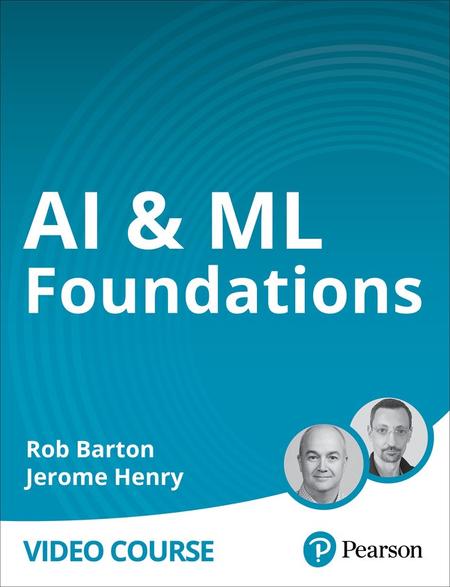English | MP4 | AVC 1280×720 | AAC 44KHz 2ch | 38 Lessons (4h 11m) | 968 MB
A non-mathematician’s and data science beginners’ course to how AI algorithms work and how to use them in practice.
- Learn how AI algorithms work, including large language models (used by ChatGPT), deep learning, reinforcement learning, and unsupervised learning
- See examples of how these algorithms work through intuitive live demonstrations
- Use development kits such as Tensorflow, Pytorch, and Sckitlearn
Get real-world, practical hands-on examples using Python and Jupyter Notebook so you can get started with your own AI projects right away
AI & ML Foundations demystifies the world of AI and LLMs. It teaches you how to apply the tools of Artificial Intelligence Markup Language (AI/ML) to solve problems faster, automate processes, find hidden patterns, and accelerate your work. Additionally, you will get an inside look into the world of AI, learning about passcode terms like LLMs, ChatGPT, TensorFlow, and Pytorch, along with explanations and examples that clarify what the many underlying algorithms, such as K-Means, SVM, XG Boost, and DBSCAN can do.
Table of Contents
Introduction
1 AI and ML Algorithm Foundations Introduction
2 AI and ML Algorithm Foundations Introduction
Lesson 1 An Introduction to the World of Artificial Intelligence and Machine Learning
3 Learning objectives
4 A Brief History of AI and ML
5 AI and ML Definitions
6 Discriminative vs. Generative AI
Lesson 2 Unsupervised Learning
7 Learning objectives
8 Clustering Principles
9 How K-means Works, Advantages and Limitations
10 Hierarchical Clustering
11 DBSCAN for Complex Shapes
Lesson 3 Supervised Learning
12 Learning objectives
13 Predictive Functions
14 Linear Regression Fitting a Curve with Training Data
15 The Cost Function
16 Gradient Descent
17 The Machine Learning Workflow
18 Classification 1 Logistical Regression
19 Classification 2 – Support Vector Machines (SVM)
Lesson 4 Random Forests
20 Learning objectives
21 Why Use Trees
22 Build Your First Tree
23 Build a Full Forest
Lesson 5 Reinforcement Learning
24 Learning objectives
25 Why Reinforcement Learning
26 Understanding Reinforcement Learning Components and Framework
27 The Bellman Value Equation
28 Q-Learning
Lesson 6 Deep Learning
29 Learning objectives
30 Why is this Learning Deep
31 Artificial Neural Networks (ANN) step-by-step
32 Convolutional Neural Networks (CNN) for Image Recognition
Lesson 7 An Introduction to Large Language Models
33 Learning objectives
34 How did Large Language Models (LLMs) Develop
35 Word Embedding
36 Transformers
37 Advanced Topics
Summary
38 AI and ML Algorithm Foundations Summary
Resolve the captcha to access the links!
